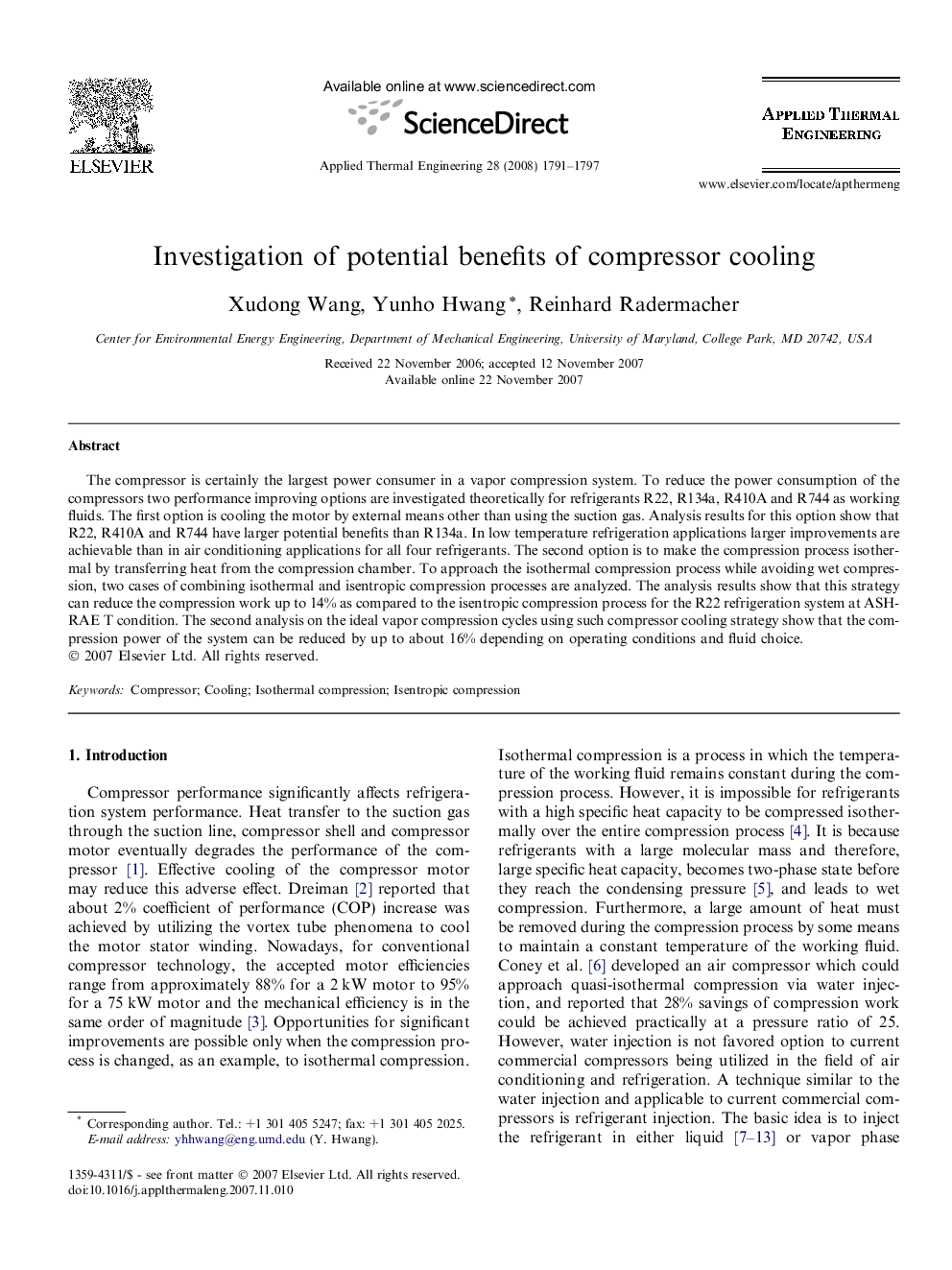| Article ID | Journal | Published Year | Pages | File Type |
|---|---|---|---|---|
| 648649 | Applied Thermal Engineering | 2008 | 7 Pages |
The compressor is certainly the largest power consumer in a vapor compression system. To reduce the power consumption of the compressors two performance improving options are investigated theoretically for refrigerants R22, R134a, R410A and R744 as working fluids. The first option is cooling the motor by external means other than using the suction gas. Analysis results for this option show that R22, R410A and R744 have larger potential benefits than R134a. In low temperature refrigeration applications larger improvements are achievable than in air conditioning applications for all four refrigerants. The second option is to make the compression process isothermal by transferring heat from the compression chamber. To approach the isothermal compression process while avoiding wet compression, two cases of combining isothermal and isentropic compression processes are analyzed. The analysis results show that this strategy can reduce the compression work up to 14% as compared to the isentropic compression process for the R22 refrigeration system at ASHRAE T condition. The second analysis on the ideal vapor compression cycles using such compressor cooling strategy show that the compression power of the system can be reduced by up to about 16% depending on operating conditions and fluid choice.
